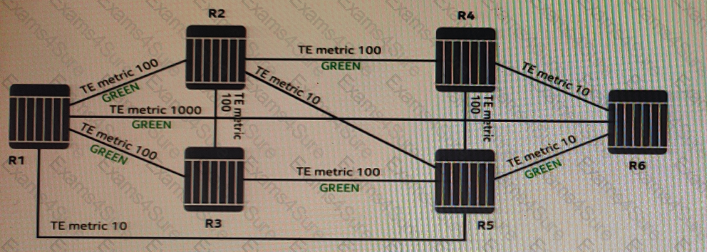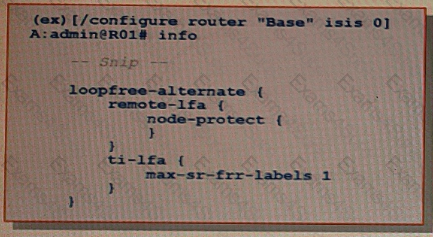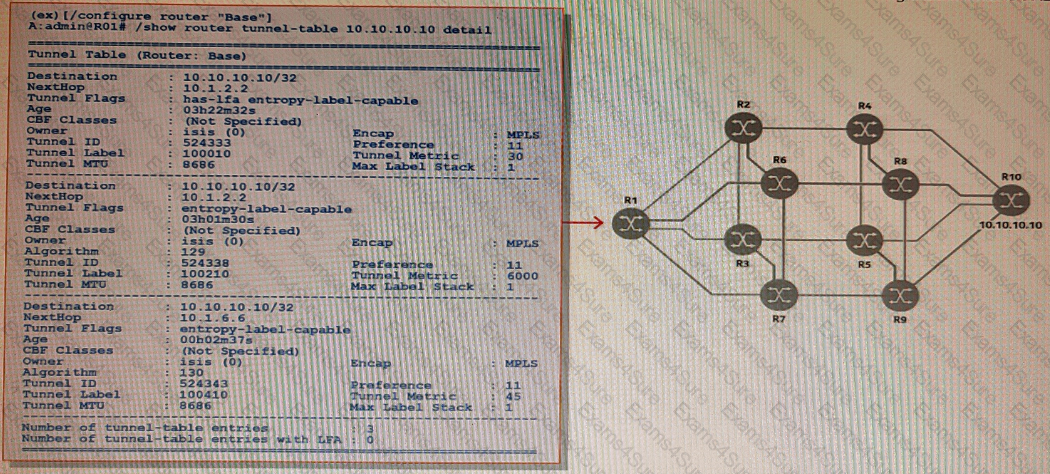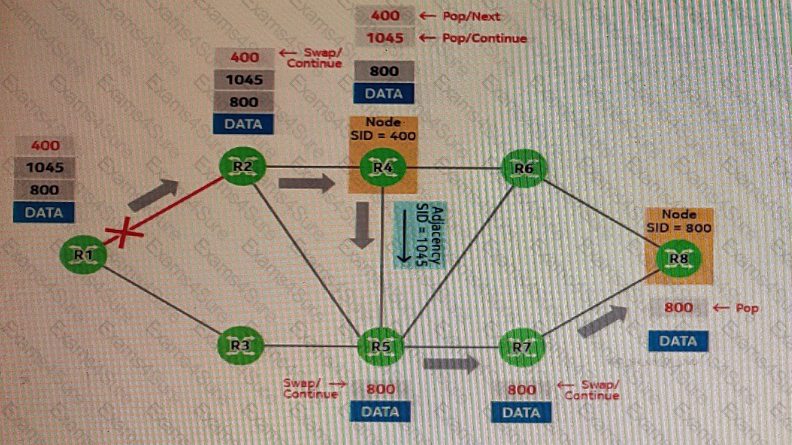Nokia Segment Routing Exam
Last Update 1 day ago
Total Questions : 40
Nokia Segment Routing Exam is stable now with all latest exam questions are added 1 day ago. Incorporating 4A0-116 practice exam questions into your study plan is more than just a preparation strategy.
By familiarizing yourself with the Nokia Segment Routing Exam exam format, identifying knowledge gaps, applying theoretical knowledge in Nokia practical scenarios, you are setting yourself up for success. 4A0-116 exam dumps provide a realistic preview, helping you to adapt your preparation strategy accordingly.
4A0-116 exam questions often include scenarios and problem-solving exercises that mirror real-world challenges. Working through 4A0-116 dumps allows you to practice pacing yourself, ensuring that you can complete all Nokia Segment Routing Exam exam questions within the allotted time frame without sacrificing accuracy.
Examine the exhibit.

An LSP is being configured to start at R1and end at R6 using local CSP
F.
The LSP has the following constraints. Include admin-group GREEN, use the TE metric and hop-limit 3. What routers will be included in the LSP path?The exhibit shows the fast re-route configuration on router R1, in which both R-LFA and TI-LFA have been enabled. Assume that there are multiple potential backup paths for a given prefix. Which of the following options will router R1 use?

Based on the exhibit, and given that the system IP address of router RIO is 10.10.10.10, which of the following statements is FALSE?

Which of the following statements about the Path Computation Element (PCE) is FALSE?
Which of the following statements about Multi-Protocol Label Switching networks is FALSE?
The exhibit presents packets being transmitted inside an LSP's multi-segment primary path going from router R1 to router R8. The LSP also has a standby secondary path, and Seamless-BFD has been enabled on the primary path. The link between routers R1 and R2 fails, and fast re-route (FRR) is triggered. As a result, router R1 forwards the packets to router R3 and adds the proper FRR encapsulation to reach which router?



TESTED 05 May 2024
Hi this is Romona Kearns from Holland and I would like to tell you that I passed my exam with the use of exams4sure dumps. I got same questions in my exam that I prepared from your test engine software. I will recommend your site to all my friends for sure.
Our all material is important and it will be handy for you. If you have short time for exam so, we are sure with the use of it you will pass it easily with good marks. If you will not pass so, you could feel free to claim your refund. We will give 100% money back guarantee if our customers will not satisfy with our products.